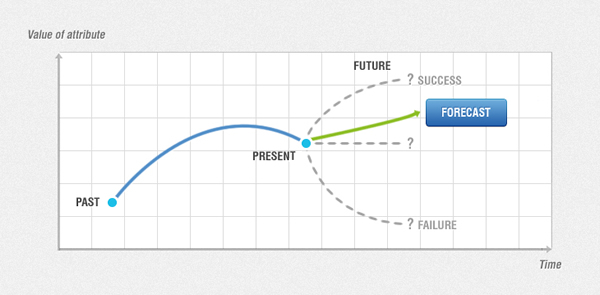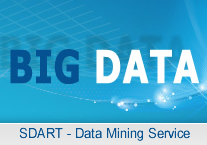The best decisions are the ones taken with a clear understanding of the consequences.

Any decision-making without a clear understanding of future trends risks reduced profits or increased losses. Therefore people look for ways to predict events and values or delay the decision until there is a clear indicator to follow. The latter approach will not enable you to optimise your competitive edge. Using prediction algorithms can make the management of the future much more predictable. We do not have to guess, by using past combined with present information it is possible to estimate much more accurately the most likely situation and to take the best decisions in accordance to this knowledge.
The Business Intelligence created by applied forecasting can be used in many different sectors. It has proved of particular value to customers in Investment Banking where forecasting is used to predict possible corporate bankruptcy. Also in Finance where prediction of currency exchange ratios allows one to protect against the negative changes or encourages investments.
There are two approaches to forecasting:
- Trending or predicting a continuation based on the shape of the line generated by plotting past results. This is a very simplistic approach to generating a future forecast. Historical data representing changes is plotted to generate a proximity curve. Unfortunately this method is very inaccurate when the environment is dynamic and changes can be easily made by external factors. In the example of sales forecasting we would need to consider how the customers requirements might have changed, how the status of the product is impacted on by competition, other environmental influences such as economy, environment or fashion.
- Predictive Modelling - more advanced way of forecasting is to generate a predictive model of the forecasted environment. The generated model should include and evaluate all the variables impacting on the results. The job of the model will be to predict the results in relation to a future scenario. Data Mining technology is used to understand the relationship between the inputs and the outputs of the model. This is more advanced, more accurate and realistic way of forecasting. The additional benefit is also the possibility of testing various scenarios and learning how to achieve and influence the results. (see how to implement it our Data Mining guide)

SDART offers a professional service helping with a detailed understanding of Data Mining methods and Predictive Modelling algorithms. For more information please contact one of our experts. (see our Data Mining service)
